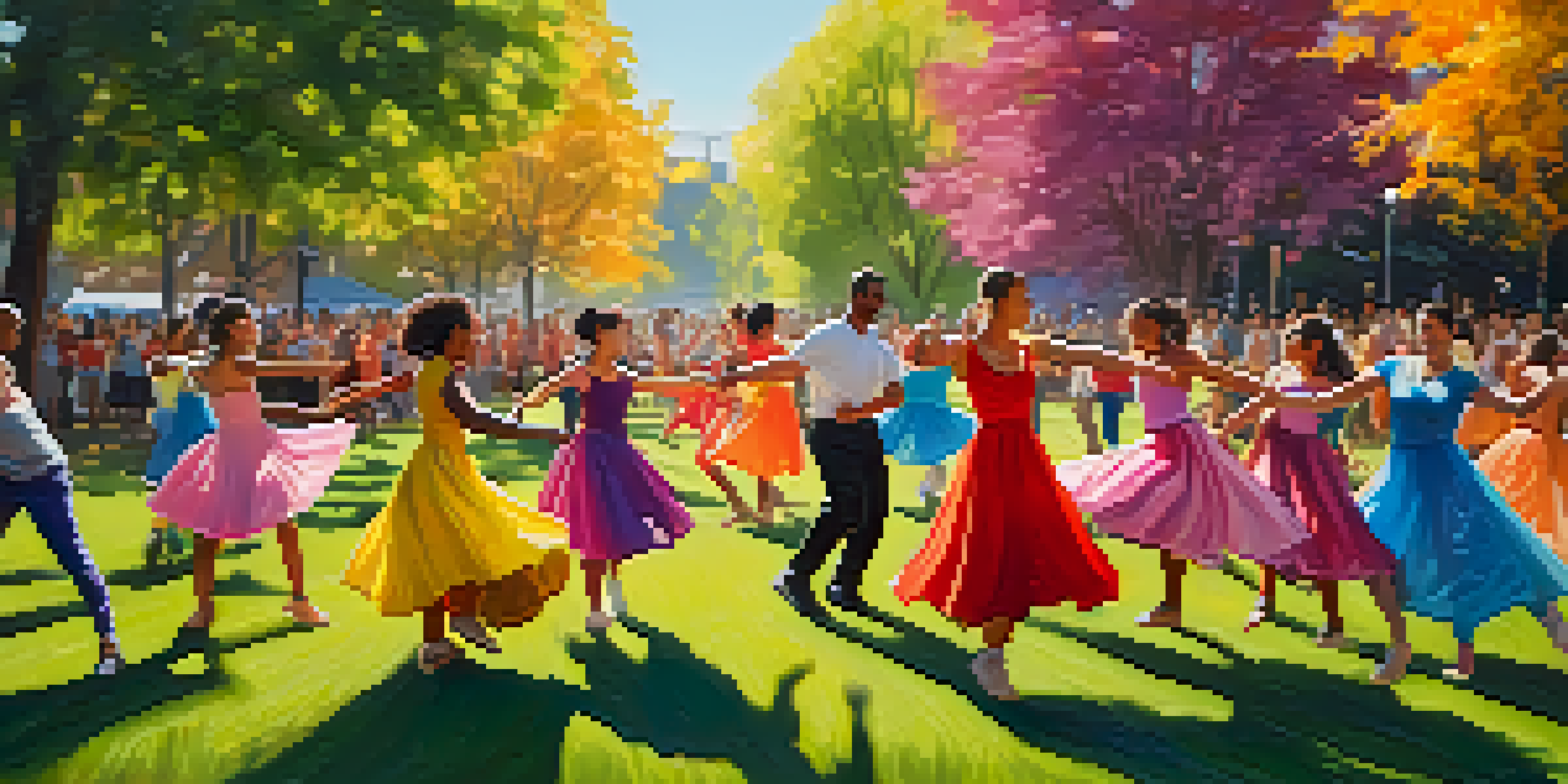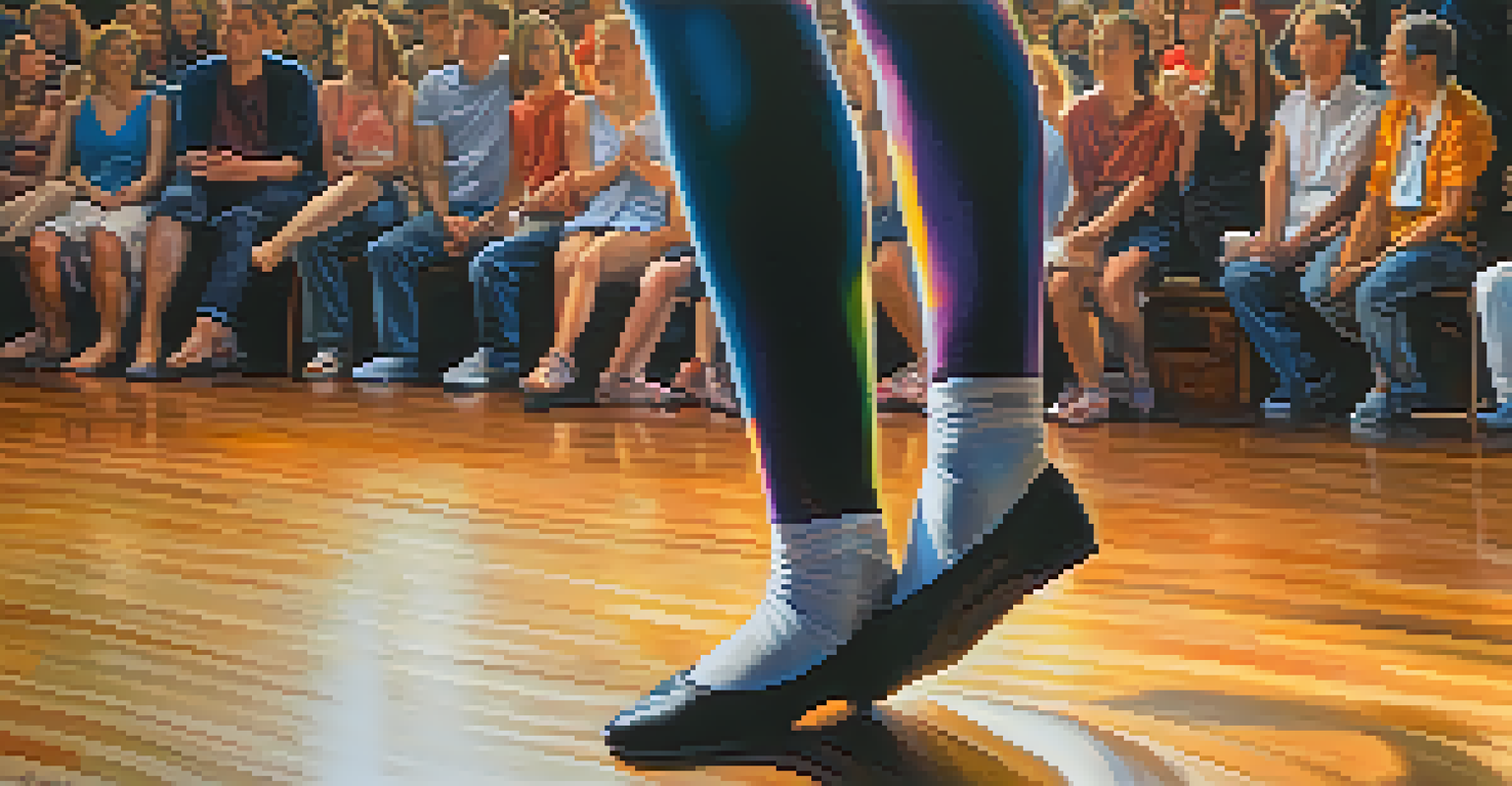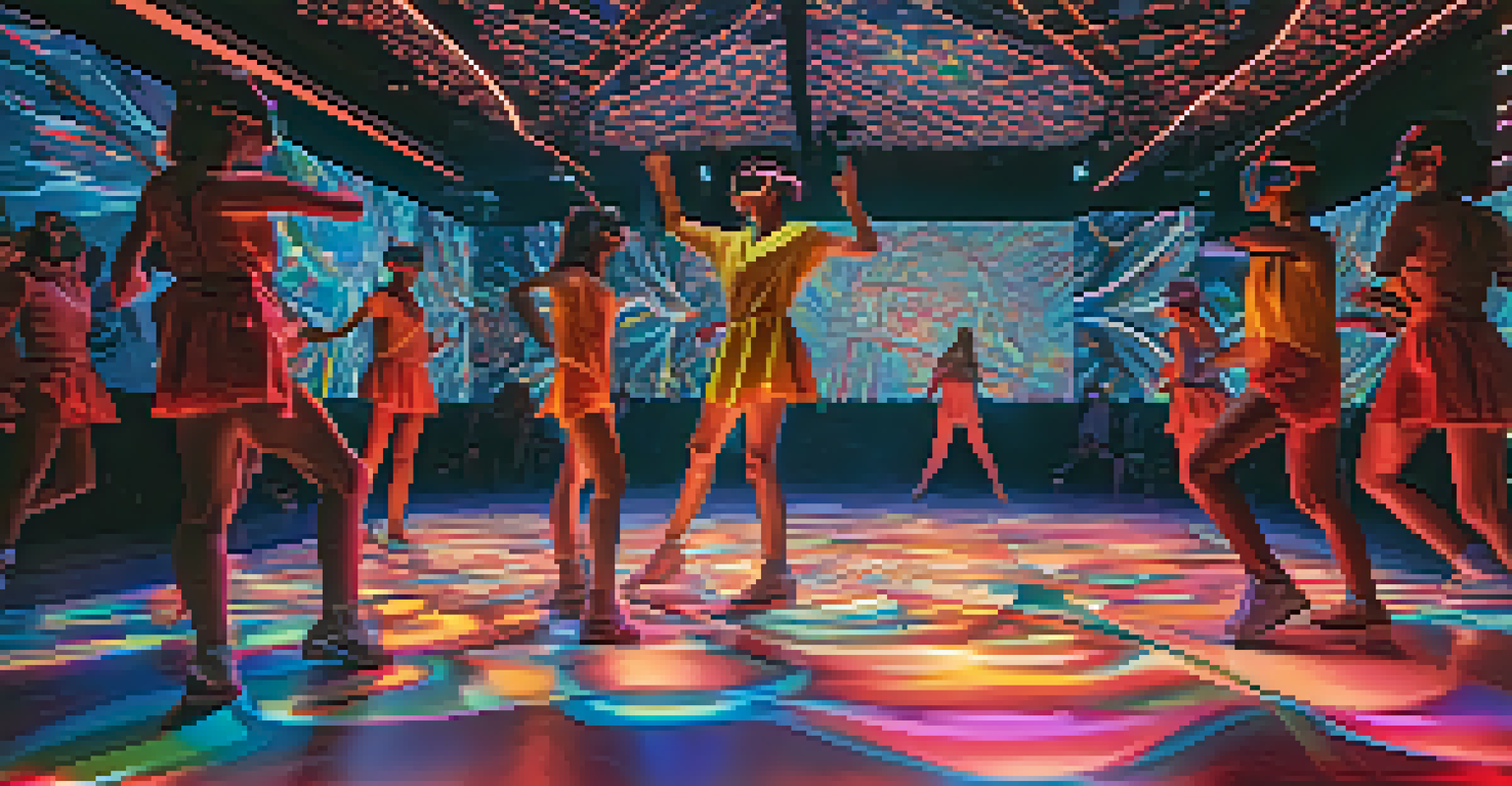Interactive Dance Experiences: Merging Audience and Performer

What Are Interactive Dance Experiences?
Interactive dance experiences invite audiences to actively participate in the performance. Unlike traditional dance, where spectators simply watch, these experiences break down the barrier between performers and viewers. This engagement fosters a unique atmosphere where everyone can express themselves, creating a shared moment of creativity.
Dance is the hidden language of the soul.
Imagine attending a performance where you're not just an observer but a dancer, too. You might be invited to join the performers on stage or engage with them through movement in the audience. This kind of participation transforms the experience, allowing for spontaneity and personal expression.
These experiences can vary significantly, from workshops that teach dance moves to fully choreographed pieces that incorporate audience interaction. The goal is to create a dynamic environment where the lines between artist and audience blur, resulting in a memorable and immersive experience.
The Evolution of Dance Performance
Dance has always been a form of expression, but the rise of interactive experiences represents a fascinating evolution. Historically, performances were rigid and hierarchical, with audiences expected to remain passive. Today, however, artists are embracing new technologies and methodologies to create engaging experiences that resonate with contemporary audiences.

For instance, the integration of digital technology can enhance audience participation. Apps or wearable devices might allow spectators to influence the performance in real-time, leading to a unique show every time. This innovation not only modernizes dance but also makes it more accessible and relatable.
Interactive Dance Breaks Barriers
Interactive dance experiences invite audience participation, transforming traditional performances into collaborative creative expressions.
As dance evolves, it reflects broader societal changes in how we connect with art and each other. The shift towards interactive performances signifies a desire for community and shared experiences, which is increasingly important in our fast-paced, technology-driven world.
Benefits of Audience Participation in Dance
Audience participation in dance offers numerous benefits, both for the performers and the participants. For performers, engaging with the audience can lead to a more dynamic and responsive performance. This interaction often inspires artists, allowing them to explore new creative avenues.
The body says what words cannot.
For the audience, participating in dance can be a liberating experience. It encourages self-expression and can help break down barriers, making dance accessible to those who may feel intimidated by traditional performances. When people dance together, they bond over shared experiences, fostering a sense of community.
Moreover, studies suggest that active participation in the arts can improve mental health and well-being. Dance allows individuals to express emotions and connect with others, making it a powerful tool for social connection and personal growth.
Technological Innovations in Interactive Dance
Technology plays a pivotal role in shaping interactive dance experiences. Innovations such as augmented reality (AR) and virtual reality (VR) are revolutionizing how audiences engage with performances. Imagine putting on a VR headset and stepping into a digital dance world where you can interact with virtual dancers.
Additionally, mobile apps can enhance live performances, enabling audience members to vote on dance moves or change elements of the show. This real-time interaction not only captivates the audience but also allows for a tailored experience that evolves with each performance.
Tech Innovations Enhance Engagement
The integration of technology like AR and mobile apps is revolutionizing audience interaction in dance, making each performance unique.
As technology continues to advance, the possibilities for interactive dance are limitless. Artists are constantly exploring new ways to merge technology with movement, creating exciting and immersive experiences that challenge our perceptions of dance and performance.
Case Studies: Successful Interactive Dance Projects
Several innovative projects have successfully integrated audience participation into dance. For example, 'The Dance of the Future' allowed spectators to control elements of the performance using their smartphones, creating a unique and personalized experience. This project highlighted how technology can enhance the connection between performers and the audience.
Another notable example is 'Dance Together,' a community-based project that brought together professional dancers and local residents for a collaborative performance. Participants of all skill levels were encouraged to express themselves, resulting in a rich tapestry of movement that reflected the community's diversity.
These case studies illustrate the potential of interactive dance to foster creativity and connection. They demonstrate that when audiences become active participants, the resulting performances can be more vibrant and meaningful.
Challenges in Creating Interactive Dance Experiences
While interactive dance experiences are exciting, they also come with their own set of challenges. One major hurdle is managing the balance between audience participation and choreographed elements. Dancers must be adaptable, as audience involvement can lead to unpredictable outcomes that require quick thinking and creativity.
Additionally, not all audience members may feel comfortable participating. Some may be hesitant to engage due to shyness or lack of experience in dance. It's essential for choreographers to create an inclusive environment that encourages participation while respecting individual comfort levels.
Community Connection Through Dance
Audience participation fosters a sense of community and personal growth, allowing individuals to bond through shared creative experiences.
Finally, logistical challenges such as space and resources can complicate the execution of interactive performances. Ensuring that technology functions smoothly and that the performance area accommodates audience interaction can require careful planning and coordination.
The Future of Interactive Dance Experiences
As the world of dance continues to evolve, the future of interactive experiences looks promising. Artists are increasingly experimenting with new forms of engagement, pushing the boundaries of what dance can be. This trend is likely to grow, reflecting our collective desire for connection and shared experiences in the arts.
Moreover, the incorporation of technology will likely become more sophisticated, creating even more immersive experiences. We may see performances that integrate AI, allowing for real-time feedback and adaptation based on audience reactions, making each show a unique adventure.

Ultimately, the future of interactive dance experiences holds the potential for rich, transformative encounters. As audiences and performers come together in creative collaboration, the art of dance will continue to flourish in exciting and innovative ways.